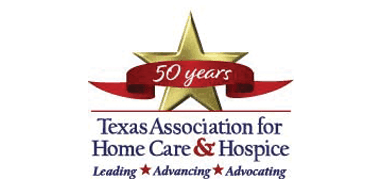Texting is a quick and easy way to communicate with colleagues and patients. Home health providers appreciate the convenience of using text messaging to confirm appointments, answer questions, and address concerns with fellow staff members and their case load. However, text isn’t always best despite its popularity for convenient communications. Agencies might be more at risk than they think if staff members are texting each other information about patients. And, free consumer group messaging apps utilize vulnerable platforms which are unable to address health care-specific needs in terms of security and compliance.
An agency places itself and its patients at risk when sending ePHI via unencrypted text messaging. Text messaging should not be used when patient data – ePHI – is being shared. It’s critical that these types of communication are both fast and secure. HIPAA-compliant secure messaging must be used in order to secure ePHI in staff-to-staff and staff-to-patient communications. The HIPAA Journal indicates that a single breach of HIPAA can be anything up to $50,000 per day the vulnerability responsible for the breach is not attended to. And, agencies which text in violation of HIPAA can also face civil charges from the patients whose data has been exposed if the breach results in identity theft or other fraud.
With secure messaging functionality, home health staff members can easily and securely communicate and collaborate with colleagues, their patients and family caregivers, and with other care team members such as the referring physician or another specialist. HIPAA-compliant secure messaging is critical to securing ePHI in staff-to-staff and staff-to-patient communications and workflows are optimized:
- Wound Care: When caring for patients with wounds, the field nurse or the patient himself/herself can use their smartphone to take a photo of the current state of the wound’s healing and share it (via secure messaging) with the wound care specialists for proper guidance on the next steps. With this functionality, the WCN can make a more immediate recommendation. The patient receives the care he/she needs; the specialist saves driving time and expenses. Productivity is optimized and satisfaction is enhanced.
- Hospice: When family caregivers experience problems in caring for their loved one patient and are unsure what to do next, they turn to the home health agency for immediate answers. With secure messaging functionality, the hospice nurse can quickly help the caregivers virtually and give them the support they seek. The caregiver feels more supported during this stage in the continuum of care. The nurse is able to provide more patients/caregivers with more attention as in-home visits are not always required, especially afterhours and during the weekends.
- Non-skilled: When home care aides observe a significant change in a client’s condition, they need to report the change to a supervisor or clinician. With secure messaging, aides can message in an encrypted, HIPAA-compliant environment and share images of the client with a supervisor or clinician. Medical personnel can then provide guidance via secure messaging which may alleviate the need to send a home health nurse or EMS to the client’s home.
Immediacy, privacy and trust are key when communicating PHI amongst agency clinicians and the broader care team (e.g., the referring physician, a specialist, a pharmacist, etc.). Decision-making is accelerated, helping patients receive timely care and assistance. Staff productivity is optimized, helping the agencies better leverage specialists across a larger number of cases. ER visits and readmissions are reduced, helping enhance patient satisfaction and outcomes.

